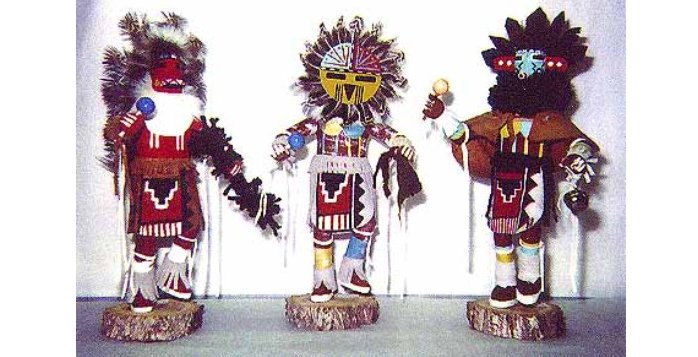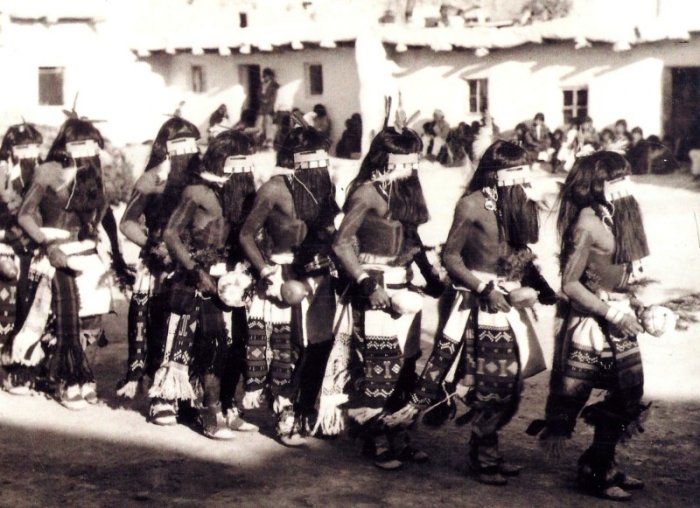Soyal: Hopi Indians’ Winter Solstice Celebration And Arrival Of Katchinas
Ellen Lloyd - AncientPages.com - There are many different kinds of winter solstice celebrations across the world.
The Hopi Indians of Northern Arizona celebrate Soyal and welcome the Kachinas, protective spirits from the mountains. The celebration begins on the shortest day of the year and symbolizes the second phase of Creation at the Dawn of Life
December has been held sacred for over a thousand years. To the Hopi Indians this month is associated with the arrival of the Katchinas (Katsinam ) who bring the Sun back to the world.
In his book, The Oxford Handbook of North American Archaeology, Timothy R. Pauketat, archaeologist and Professor of anthropology and Medieval studies at the University of Illinois writes that “according to official Hopi history Katsinam are Hopi spirit messengers who send prayers for rain, bountiful harvests, and prosperous healthy life for humankind.
They are friends and visitors who bring gifts and food, as well as messages to teach appropriate behavior and consequences of unacceptable behavior.”
There are over 250 different types of Katsinam and they all represent various beings, from animals to clouds.
The Hopi Indians celebration of Soyal. Credit: Wilder Utopia
During their stay at the Hopi the Katsinam appear in physical form, and they participate in the ceremony dancing and singing. On the first and second Mesa, the Katsinam arrive in February at the Bear Dance ceremony and on the third mesa they come in December celebrating the Soyal ceremony.
Before the Soyal ceremony can take place there are many things that need to be prepared.
The Hopi Indians make prayer sticks of tied feathers and pinyon needles called Pahos to bless the community, including their homes, animals and plants. Children receive small dolls made in the image of the Kachinas and they must learn about hundreds of Katchina spirits.
Sixteen days before the winter solstice, one of the chief kachinas enters the Pueblo.
He is dressed like an old, tired man and appears to have just awakened from a deep slumber. He sings and dance and people follow his every move. But he sings in a very low voice because the songs are sacred and not everyone is allowed to hear them.
“We Hopi are deeply religious people. We follow divine instructions and prophecies received from the caretaker of this world, Maasaw. Our religion teaches us a lifeway of humility, cooperation, respect and earth stewardship.
Soyal celebration. Credit: University of Toronto
We practice our religion with different ceremonies throughout the year which are timed according to phases of the Moon and solstices of the Sun. Many of our ceremonies seek to maintain and improve our harmony with nature, enhance our prospects for good health and long, happy life, and are supplications for rain.
Through our dances we celebrate the renewal of our life pattern, ancient immigration, and a spiritual connection with our ancestral sites.
This together with our farming traditions, ties us both physically and ceremonially to our ancestral land, the Sun, and the cycle of the seasons,” the Hopi themselves say about their annual cycle.
The Katchinas stay with the Hopi for the first half of the Wheel of the Year until the summer solstice, when they return to their home in the mountains.
Written by - Ellen Lloyd – AncientPages.com
Copyright © AncientPages.com All rights reserved. This material may not be published, broadcast, rewritten or redistributed in whole or part without the express written permission of AncientPages.com
More From Ancient Pages
-
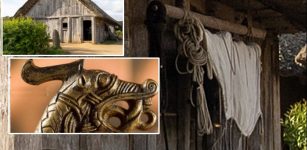 Hedeby: Prestigious Trading Center And One Of The Largest Baltic Sea Ports In Viking Age
Featured Stories | Jun 18, 2016
Hedeby: Prestigious Trading Center And One Of The Largest Baltic Sea Ports In Viking Age
Featured Stories | Jun 18, 2016 -
 First Early Roman Fortlet Found On The Isle of Anglesey, North Wales
Archaeology | Nov 26, 2015
First Early Roman Fortlet Found On The Isle of Anglesey, North Wales
Archaeology | Nov 26, 2015 -
 Suomenlinna Fortress: Impressive ‘Castle Of Finland’ Has Rich History
Featured Stories | Feb 13, 2016
Suomenlinna Fortress: Impressive ‘Castle Of Finland’ Has Rich History
Featured Stories | Feb 13, 2016 -
 On This Day In History: World War II: Battle Of Cape Esperance Was Fought – On October 11, 1942
News | Oct 11, 2016
On This Day In History: World War II: Battle Of Cape Esperance Was Fought – On October 11, 1942
News | Oct 11, 2016 -
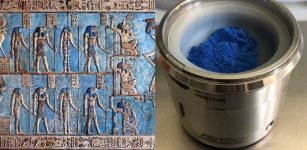 Ancient Egyptian Blue Used To Create New Nanomaterial 100,000 Times Thinner Than A Human Hair
Ancient Technology | Mar 24, 2020
Ancient Egyptian Blue Used To Create New Nanomaterial 100,000 Times Thinner Than A Human Hair
Ancient Technology | Mar 24, 2020 -
 On This Day In History: Germany Invades Poland – On Sep 1, 1939
News | Sep 1, 2016
On This Day In History: Germany Invades Poland – On Sep 1, 1939
News | Sep 1, 2016 -
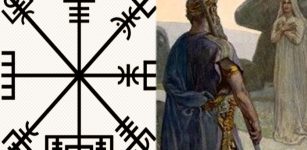 Vegvisir – Old, Sacred Norse Symbol Of Protection And Guidance
Ancient Symbols | May 23, 2020
Vegvisir – Old, Sacred Norse Symbol Of Protection And Guidance
Ancient Symbols | May 23, 2020 -
 The Pompeii Of The Fens: Ancient Village In Cambridgeshire Burned Down 3,000 Years Ago For Unknown Reasons
Archaeology | Jul 14, 2016
The Pompeii Of The Fens: Ancient Village In Cambridgeshire Burned Down 3,000 Years Ago For Unknown Reasons
Archaeology | Jul 14, 2016 -
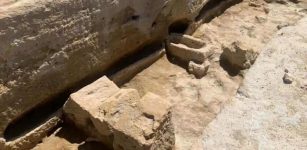 Rare Phoenician Necropolis Discovered In Andalucia, Spain Is Extraordinary, Scientists Say
Archaeology | May 2, 2022
Rare Phoenician Necropolis Discovered In Andalucia, Spain Is Extraordinary, Scientists Say
Archaeology | May 2, 2022 -
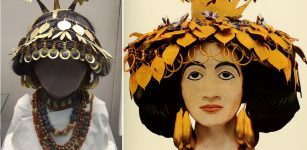 Mysterious Sumerian Queen Puabi And Her Magnificent Underground Burial Complex – Many Followed Her To Afterlife
Featured Stories | Oct 20, 2016
Mysterious Sumerian Queen Puabi And Her Magnificent Underground Burial Complex – Many Followed Her To Afterlife
Featured Stories | Oct 20, 2016 -
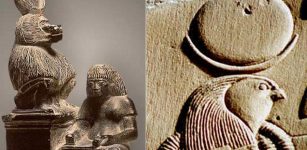 Full Moon In Ancient Myths And Legends Of Our Ancestors
Featured Stories | Nov 14, 2016
Full Moon In Ancient Myths And Legends Of Our Ancestors
Featured Stories | Nov 14, 2016 -
 First European Farmers’ Heights Did Not Meet Expectations
Archaeology | Apr 8, 2022
First European Farmers’ Heights Did Not Meet Expectations
Archaeology | Apr 8, 2022 -
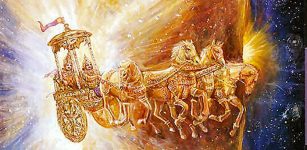 Sun: Highest Cosmic Power Worshiped By Ancient People And Represented By Deities
Featured Stories | Apr 1, 2019
Sun: Highest Cosmic Power Worshiped By Ancient People And Represented By Deities
Featured Stories | Apr 1, 2019 -
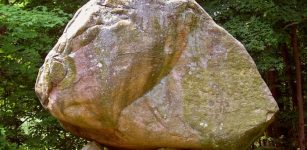 Mystery Of The Giant Boulder In North Salem
Featured Stories | Aug 8, 2019
Mystery Of The Giant Boulder In North Salem
Featured Stories | Aug 8, 2019 -
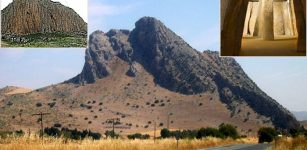 Mysterious Menga Dolmen: A New Very Old Monument Discovered
Archaeology | Sep 21, 2020
Mysterious Menga Dolmen: A New Very Old Monument Discovered
Archaeology | Sep 21, 2020 -
 Stunning Swiss Stonehenge Discovered Underwater
Archaeology | Nov 4, 2019
Stunning Swiss Stonehenge Discovered Underwater
Archaeology | Nov 4, 2019 -
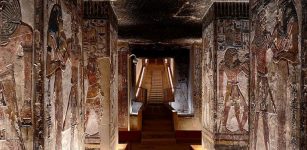 Why Pharaoh Seti I’s Tomb Had To Be The Most Glorious And Largest Ever Built In Valley Of The Kings
Featured Stories | Jun 19, 2021
Why Pharaoh Seti I’s Tomb Had To Be The Most Glorious And Largest Ever Built In Valley Of The Kings
Featured Stories | Jun 19, 2021 -
 Hyperborea Or Atlantis Ruins – Underground Secrets Of The Sacred Lake On The Arctic Circle
Civilizations | Nov 17, 2014
Hyperborea Or Atlantis Ruins – Underground Secrets Of The Sacred Lake On The Arctic Circle
Civilizations | Nov 17, 2014 -
 Human Skeleton Dated To Parthian Era Unearthed At Tepe Ashraf In Iran’s City Of Isfahan
Archaeology | Jul 25, 2020
Human Skeleton Dated To Parthian Era Unearthed At Tepe Ashraf In Iran’s City Of Isfahan
Archaeology | Jul 25, 2020 -
 Lamplighters In London: An Important Job In The Victorian Era
Ancient History Facts | May 17, 2019
Lamplighters In London: An Important Job In The Victorian Era
Ancient History Facts | May 17, 2019

